

A Brief History of The University of Southern Mississippi Libraries
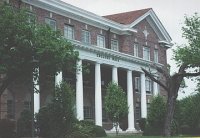
The original home for USM's library
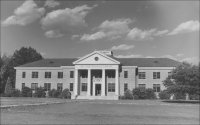
Currently, Kennard-Washington Hall
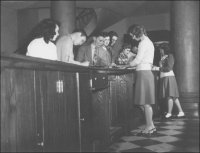
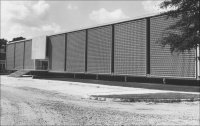
This view is from the south
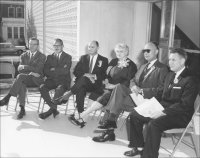
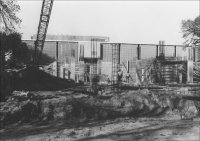
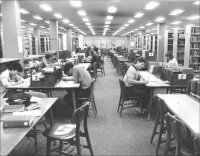
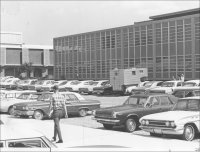

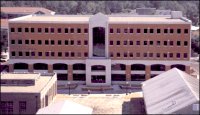
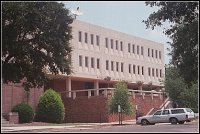
Mississippi Normal College, presently The University of Southern Mississippi, was established in 1910. When the college opened its doors to the first students on September 18, 1912, the library was located on the second floor of College Hall with the first book yet to be purchased.
Ten years later the library was in need of more space. Starting with an original collection of one dictionary, the library's holdings had increased to 3,500 volumes, 75 magazines, five daily newspapers and several weeklies.
In 1922 the library was transferred from College Hall to the newest building on campus, Science Hall, later to be known as Southern Hall. For almost two decades the library was housed in the west half of the first floor.
Mrs. Pearl Travis served a 13-year tenure as the college's librarian, which ended with her death in 1926. That same year the library gained its first qualified librarian, Miss Anna M. Roberts, who also served as the school's first professor of Library Science.
In 1934 the east wall of the library in Southern Hall was removed, doubling the amount of available space. Library materials and rooms replaced classrooms that had been in the east portion of the first floor.
As happens with libraries, the collection continued to grow. A new structure was needed to house the library. In 1939 a two-story brick building was completed, now known as Kennard-Washington Hall (or the Student Services Building). During the Christmas holidays that year, Roberts and a band of students transferred, through sleet and snow, 22,250 volumes to the new building.
This new library was officially named Joseph Anderson Cook Memorial Library in 1940, in memory of the first president of Mississippi Normal College.
In the 1950s, not one but two independent surveys concluded that the library should not be expanded. Rather, a new library building would be needed. The current library had been constructed without the input of the librarian or the faculty, and future expansion was not a major consideration at the time.
In 1956 the library reached its proposed capacity as the 75,000th book was added. Dr. W. D. McCain, the newly chosen president of what was now known as Mississippi Southern College, asked the legislature for $1 million for a new library. The legislature awarded $700,000. Begun in 1959, the library was completed at a cost of $855,000, in time for the celebration of the 50th anniversary of the founding of the college.
The structure was built to accommodate expansion. It was built to accommodate 200,000 volumes and could seat more than 700 students at a time. This structure is still a part of Cook Library. As of 2021, it housed the Libraries' Technology and Technical Services Departments on the second floor, with an employee lounge, Mathematics Center, Center for Student Success, and Title IX Office on the first floor.
Miss Roberts again supervised the transfer of over 100,000 books to the new library. It took place during the summer-fall break, and not a single day's library service was lost.
Miss Roberts retired in 1962 and was replaced by Dr. Warren F. Tracy, serving as librarian and chairman of the Department of Library Science. He was present when a new addition to the library was completed in 1968, making it the largest building on campus under one roof. The addition doubled the seating and shelving capacity of the library.
The second floor of the 1968 addition was renamed "2nd Floor South" on December 15, 2008, and now houses the media and microforms collections, along with ten study rooms and other seating. The first floor of the 1968 addition was renamed "Learning Commons" on April 9, 2010, and now houses a large seating area, the Curriculum Materials Center, and reference collection, along with the University's Speaking Center, Writing Center, and TRIO-Student Support Services.
In the mid 1990s a massive construction and renovation project took place at Cook Library. The present two-story library contained asbestos that had to be removed. On the north side of the two-story structure a $13 million, five-story addition to the library was built. The project was completed in 1996.
The first and second floors of Cook Library were renovated from mid-2019 to 2021. Infrastructure and cosmetic improvements included elevators, fire suppression system, HVAC system, roof, paint, and flooring. The construction provided redesigned spaces for Access Services, Research Services, Library Technology, and Technical Services. Additionally, spaces were created for several Academic Affairs units, including the Advisement Center, Bower Center, Center for Student Success, and TRIO-Student Support Services Program.
The William David McCain Library and Archives buiding was built just south of Cook Library in 1976. It houses the University's archives and special collections such as the Mississippiana Collection, the de Grummond Children's Literature Collection, and oral history transcripts, among many other items.
The Curriculum Materials Center was established in 1965 by the College of Education and Psychology. It was renamed the Gunn Educational Materials Center on April 23, 1988, in honor of Dr. Eric McCoy Gunn, former dean of Education and Psychology. The Gunn Materials Center subsequently returned to it's original name and is now housed in Cook Library.
Cox Library, Media Center and Curriculum Lab
The Gulf Coast Library was originally housed in the Cox Library building (at the Southern Miss Gulf Park campus). The Cox Library building was formerly an art studio, built in 1923. USM acquired the former two-year liberal arts Gulf Park College for Women in 1972. The Cox Library was dedicated in 1975, in honor of Dr. Richard Garfield Cox (1881-1967), founder and first president of Gulf Park College. The historic building retained its decorative brick fireplace and tall wood-framed windows, even through several renovations, one in 1983, and another in 1986. Over the years, the library staff and collections outgrew the original Cox Library building. By the time funding was found for a new building, library services were housed in three buildings on campus: The Cox Library, the Media Center, and the Smith Studio (which contained the Curriculum Lab).
Gulf Coast Library
In 2000, there was a groundbreaking ceremony for the new library. The style of the building was Mediterranean, designed to match the other buildings on campus. The building is beautiful, but also very functional and user-friendly. The Gulf Coast Library opened for business in August 2002. The new three-story 54,000 square foot library contains a state-of-the-art Learning Commons, computers on every floor, study rooms, book and DVD collections, Curriculum Lab education materials collection—including an extensive children's literature collection, Academic Success Center, and the Gulf Park College for Women Archives. After Hurricane Katrina, the Katrina Research Center was established and housed on the library's third floor for several years.
Hurricane Katrina
In 2005, the first floor of the Gulf Coast Library was heavily damaged by storm surge. The entire first floor was renovated. New computers and furniture were purchased, and the Learning Commons was designed. The Gulf Coast Library on the Gulf Park Campus re-opened to the public in 2007.
Gulf Coast Student Center Library
While the Gulf Coast Library was closed after sustaining damage from Hurricane Katrina, library services were moved to the Gulf Coast Student Service Center in Gulfport. Full library services were available, including circulation, course reserves, computers, reference assistance, and a book/DVD collection that complemented the academic programs that were available at that site. The GCSSC Library closed in December 2012 when the Gulf Park Campus renovations were completed.
Gunter Library, Gulf Coast Research Laboratory, Ocean Springs
Dr. Gordon Gunter, Director of GCRL from 1955 to 1970, began the Library on September 1, 1955. The Board of Trustees named it in his honor on December 21, 1972. In its earliest form, the library resided in the Director's office and consisted of books and reprints from Dr. Gunter's personal collection. By the mid-1960s, a full-time GCRL staff member, Malcolm S. Ware managed the collection. Ware cultivated and pursued an active journal exchange program using the laboratory's scientific journal founded by Gunter, Gulf Research Reports, significantly augmenting the growth of the serial holdings.
With the construction of the Caylor Building in 1971 and the addition in 1976, the library had a dedicated space with a work and study area for researchers and students, a three-story journal storage tower, and offices for library staff. Following Ware's retirement in 1995, the library's first MLIS degreed Head Librarian, Joyce M. Shaw, came aboard to lead the library. During her tenure, Gunter Library's relationship was formalized with University Libraries (UL).